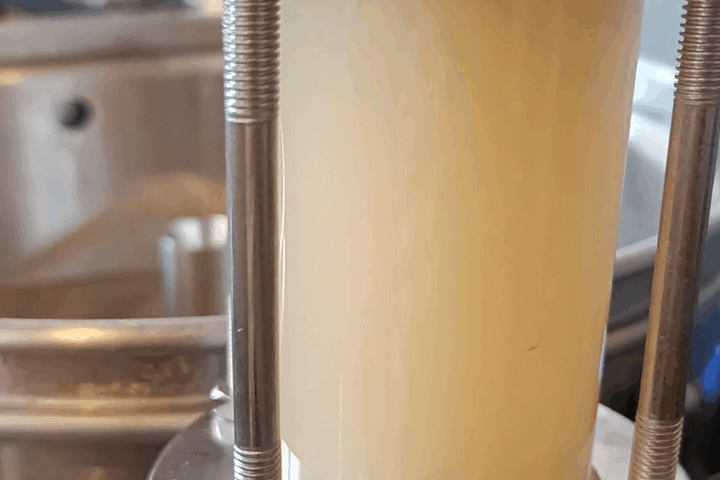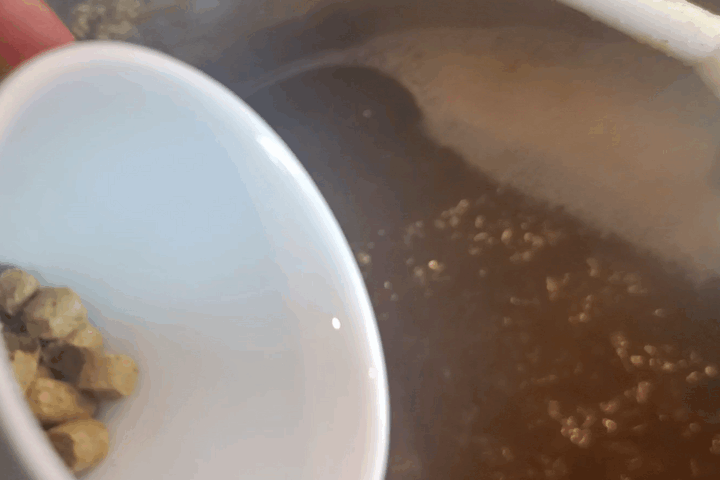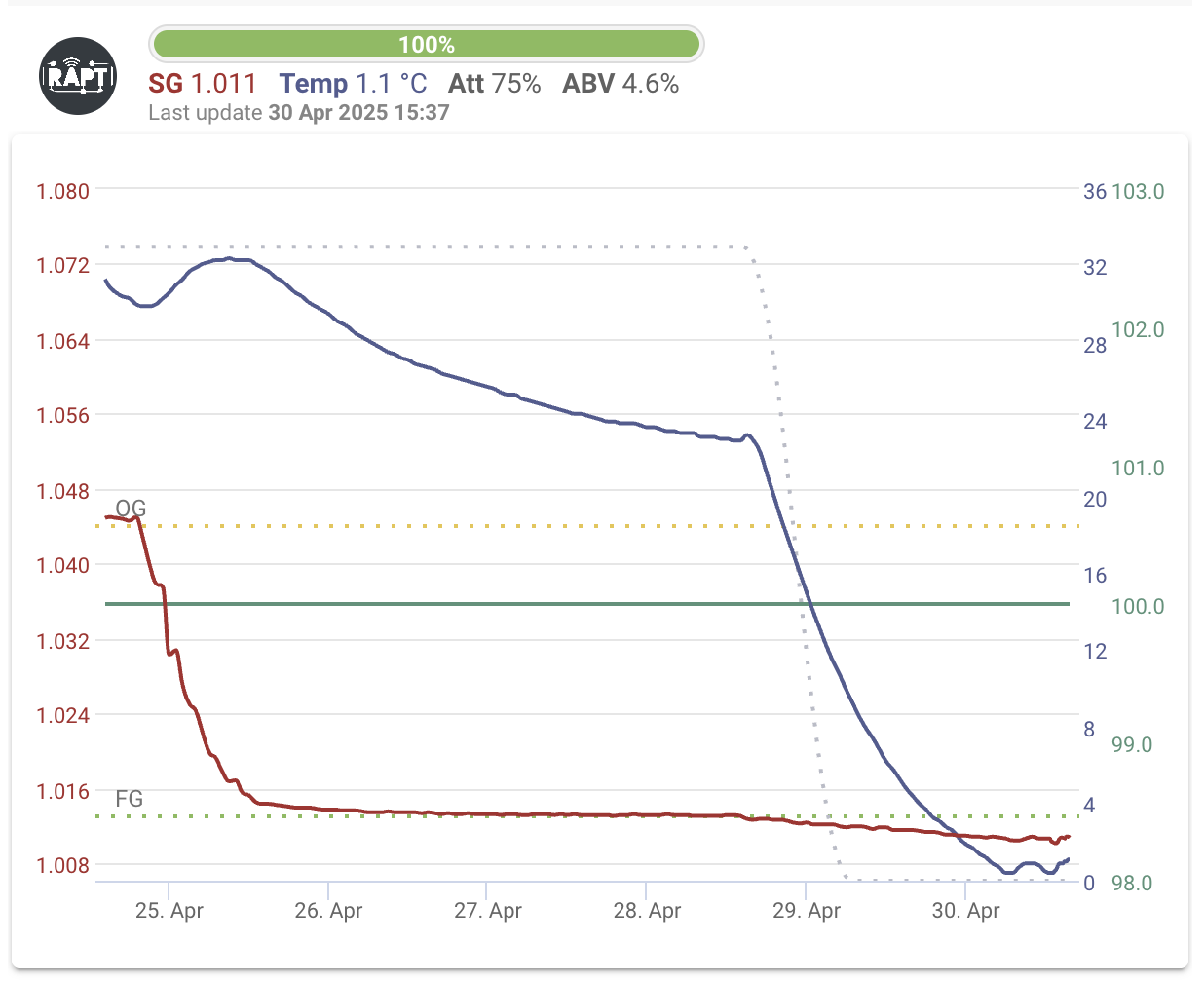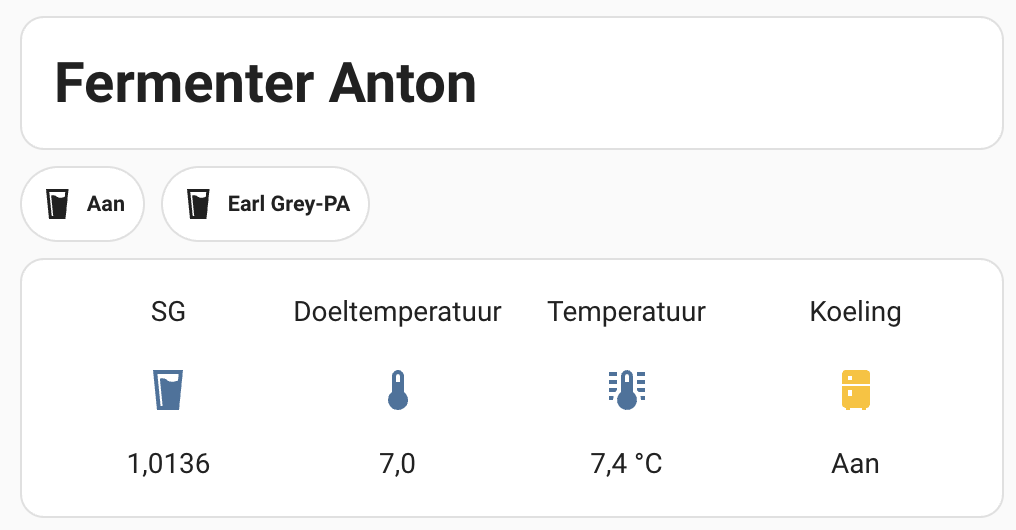Not drinking but brewing!
This time something different for #BeerSaturday: Instead of drinking craft beer, brewing craft beer.
Since 2016 I’ve been brewing beer myself. And while in the beginning I only had a big pot for boiling (and used a plastic bucket under my duvet for mashing), for about 4 years now I’ve been using a #Grainfather. That’s a brewing kettle with a small LCD screen where you can program the different brewing steps: mash, boil, cool.
In theory, brewing becomes easier with this setup, but in practice it gives you more time to focus on all the other variables involved: milling your own grain, monitoring pH, creating your own recipes. And of course, buying more gear: temperature-controlled fermentation, pressure fermentation, cold crashing, collecting DATA.
A beer that’s always a crowd-pleaser and one I’ve brewed several times is the Earl Grey-PA. A Pale Ale to which Earl Grey tea is added at the end of fermentation.
To start, I currently keep a decent stock of malt at home. This needs to be milled first so the sugars are no longer trapped inside the grains. It's a combination of Pale Ale malt (the base) and a darker malt (for flavor). I also add flaked oats which give that nice creamy, hazy effect.

Meanwhile, the brewing water is heated to 65 degrees and the grains can be added. Give it a good stir and then circulate the water for 60 minutes so all the sugars dissolve nicely.

While I add some extra water through the grain bed, the kettle heats up to boiling point. The goal is to boil the wort for an hour to sterilize it (after all, in the past river water was used). During this process, you can add flavoring agents: hops. In my case, 3 additions of a citrusy hop. For the process I’m running today, the hop variety is less important. But with really hoppy beers, especially when a lot of hops are added post-boil, hop choice becomes essential.

After boiling, the wort is cooled, usually to 10–20°C, ideal for most yeasts. But since the weather is beautiful in the Netherlands this week and I’d like to drink this beer soon, I only cooled it to 30°C.
This because I'm using a special type of yeast: Kveik. This is a Scandinavian yeast that thrives at high temperatures, so you don’t need temperature control (read: fermenting in a fridge). Another advantage is that the beer ferments fully within 72 hours. That means all (or at least most) sugars are converted into... alcohol!
I suspended the tea using sous-vide magnets so I can drop it in without opening the fermentation vessel (which would otherwise risk infection).

Below, for the true geeks, the graph from my Raptor Pill in Brewfather, showing how the alcohol develops. The beer will be ready for tasting the day after tomorrow. Maybe I’ll be able to tell you more about it in the next #BeerSaturday.

So cool that you brew your own beer! It must be a great feeling to make something yourself and watch it all come together. Cheers!
Totally! Sometimes it works out great, sometimes not so much. But it’s always homemade, and that’s what makes it fun.
Yeah, even when it doesn’t go perfectly, it’s still something you make and that’s what makes it so satisfying.😀
Yes - and you learn each time a bit more
Love to learn more about your results and The Grainfather as I look into this since a while.
Anyway, a digital !BEER for you.
Thanks for the beer! Maybe I can do another blog on the Grainfather and my workflow. I use Brewfather and Grainfather for the brewing process. And also Home Assistant for some geeky temperature control during fermentation.

Love to read this and even more
View or trade
BEER.Hey @dersjoerd, here is a little bit of
BEERfrom @detlev for you. Enjoy it!Learn how to earn FREE BEER each day by staking your
BEER.Congratulations @dersjoerd! You have completed the following achievement on the Hive blockchain And have been rewarded with New badge(s)
Your next payout target is 50 HP.
The unit is Hive Power equivalent because post and comment rewards can be split into HP and HBD
You can view your badges on your board and compare yourself to others in the Ranking
If you no longer want to receive notifications, reply to this comment with the word
STOPCheck out our last posts: